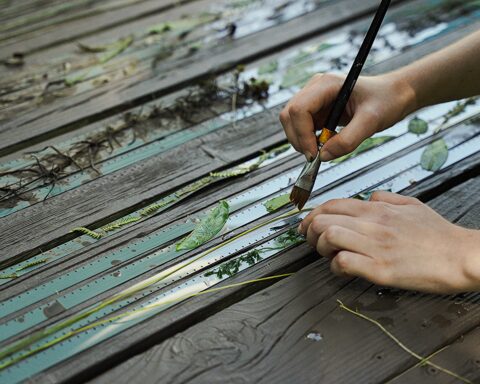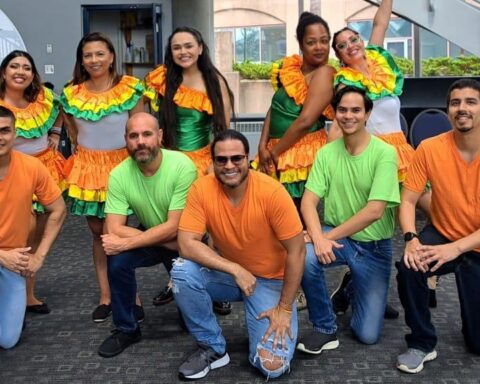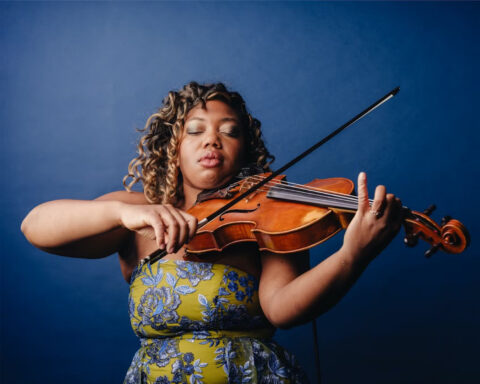Inside the Halifax Seaport Farmers’ Market on Halifax’s waterfront you’ll find a stack of the Dakai Times newspapers. Printed in Chinese and English, the quarterly newspaper is a tiny nod to the growing immigrant population in the area. On Saturday mornings, the market fills with sounds, scents and accents from all corners of the world. The lone stand of newspapers tells a different story. Local ethnic media – integral to community integration for newcomers – is almost entirely absent from the airwaves and newsstands in the province.
The provincial government is working hard to bring immigrants to Nova Scotia. Nearly 5,500 newcomers arrived in 2016 — the highest number in the last decade — and more are expected for 2017. Significant resources are being put into the Atlantic Immigration Pilot and Halifax Partnership to bring immigrants to the province and keep them here. One thing missing for new and old immigrants is information in their mother tongues. Where local media is absent, newcomers are leaning on international sources for news from home in a familiar language.
Filling the gaps:
Halifax is home to the majority of Nova Scotia’s immigrants and the few local ethnic media outlets catering to immigrants are there, too.
Meng Zhao started the Daikai Maritimes Newspaper in 2012. It covers local events, highlights local business owners, and regularly documents its issues in the Nova Scotia Archives. Through a partnership with The Chronicle Herald, 30,000 copies are distributed four times a year as well as 5,000 copies at specific neighbourhoods in Halifax Regional Municipality. Zhao set out to fill a gap in a niche community, and five years later is still the only print source in the province printed in a minority language.
The second most spoken language in Halifax is Arabic, but it wasn’t until the spring of 2016 that Montreal based 1450 AM launched 99.1FM Radio Middle East in the city. The station broadcasts Arabic programs and a selection of Arabic and international music. Account executive for the station Oudai Altabbaa says the minority language audience is on the rise in Halifax, and “somebody needs to tap into it and talk to it.”
Altabbaa knows there is great potential for the economy to grow by capitalizing on this market. But “it’s extremely hard to educate businesses here about the benefit of this because they are not used to it, and as we know Nova Scotia is very traditional,” he says. “So when you tell them it’s an Arabic radio station, they don’t take you seriously.”
Working to highlight the importance of immigrant voices and stories is My Halifax Experience. The quarterly magazine fills news stands in ethnic grocers and community centres, and content is regularly published online. Filled with helpful tips and inspirational stories, in English, it speaks to all immigrants, beyond their mother tongues. The online website has expanded to My East Coast Experience with the same goal in mind.
International magazines and newspapers available from libraries or specialty newsstands are filling in the rest of the gaps. Halifax Public Libraries has an extensive collection of subscriptions in Spanish, German, Arabic, Russian, Hindi, Japanese, Chinese and more. Atlantic News, a specialty store for newspapers and magazines, fills one to four regular subscriptions for Russian newspaper Argumenti & Facti and German sources Der Spiegel and Die Zeit weekly and biweekly.
Moving Forward:
In 2011, immigrants accounted for 5.3 per cent of the Nova Scotian population. That proportion is expected to rise to between 7.7 and 10.7 per cent in 2036, according to Statistics Canada. Immigrants in Halifax made up 8.2 per cent of the city’s population in 2011. By 2036, that will rise to 15.2 per cent.
“When immigrants are feeling like they are a little bit more connected with opportunities that come up because of radio stations or media speaking their language,” says Altabbaa, “they might decide to stay in Nova Scotia.”
As Nova Scotia welcomes more immigrants and tries to keep them in the province, ethnic media has an opportunity to catch up, then develop and grow.
This article was republished under arrangement with Mirems.




